Welcome to Stavanger on Norway's southwest coast, where the rugged beauty of nature meets a vibrant cultural scene. Famous for its proximity to the stunning Lysefjord and the iconic Preikestolen, Stavanger offers plenty of things to do for the curious tourist.
Considering a visit to this part of Norway? You're in great company, as Stavanger draws visitors from all corners of the globe each year. Whether you're an art aficionado, history enthusiast, nature lover, or simply a wanderlust-driven traveller, Stavanger promises an array of experiences for every kind of visitor.
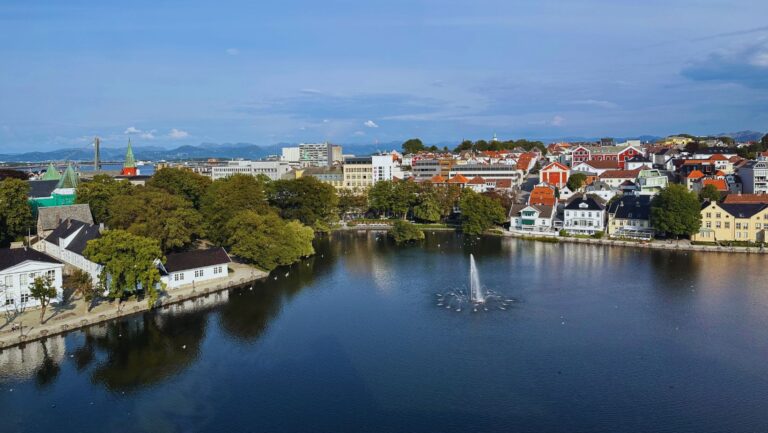
I have been to Stavanger several times now, and each visit reveals new facets of this curious city and its surrounding attractions.
From the majestic beauty of the Lysefjord to the historic charm of Gamle Stavanger, this list is your key to uncovering the best of Stavanger's well-known sites and hidden treasures.
Stavanger Travel Resources: Find a Hotel – Car Rental – Book Tours. And when visiting Norway, don't forget travel insurance.
This guide, while extensive, isn't exhaustive. Capturing every single thing to do in Stavanger would be a colossal task! Nevertheless, I'm confident that within these recommendations, you'll find the perfect addition to your itinerary.
To streamline your planning, I've categorised my suggestions. We'll start with the must-do Lysefjord experiences and then delve into more specialised recommendations within the city. Let's get going…
Video Highlights of Stavanger
First things first, if you prefer watching to reading, check out my video all about the highlights of the city, here:
If you enjoyed the video, please do read on for much more detailed information about everything you saw, and more.
Trips to the Lysefjord
One of Norway's most magnificent fjords, the Lysefjord is a natural wonder that truly comes to life when explored beyond the limitations of the road. There are very few viewpoints accessible by car.
Its sheer cliffs and crystal-clear waters can only be fully appreciated through boat excursions or invigorating hikes, offering a gateway into the heart of Norwegian lifestyle and Norway's raw and unspoiled landscapes.
1. Preikestolen Bus & Hike
For those seeking a bird's-eye view of Lysefjord, the hike to Pulpit Rock (Preikestolen) is a must. Perched nearly 2,000 feet above the fjord, this iconic clifftop offers one of the most awe-inspiring views in all of Norway.
Spanning a total of 8 miles, this roundtrip hike will take between four and five hours. The journey requires a decent level of hiking experience as there is a lot of elevation gain, but the reward is unparalleled: a panoramic view of the fjord in its full grandeur.
Convenient daily bus shuttles connect downtown Stavanger to the trailhead, making access relatively easy.
2. Join a Lysefjord Sightseeing Cruise
If the Preikestolen hike is too ambitious for you, don't worry. Instead, embark on a captivating three-hour sightseeing cruise from central Stavanger, available daily during the peak season and several times a week throughout the year.
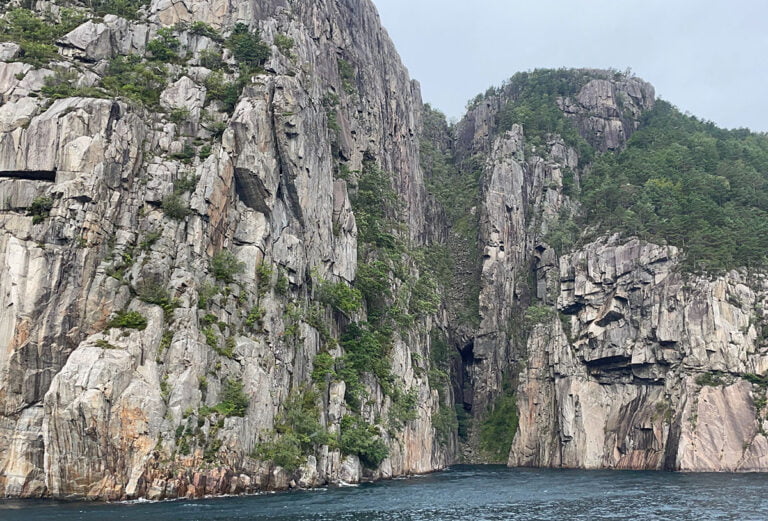
The cruise glides towards the majestic Lysefjord bridge – the gateway to the fjord. As you pass beneath its expanse, you'll be greeted by a succession of notable sights.
There's Vagabonds Cove, a hidden treasure with a fascinating story. The imposing Pulpit Rock can be glimpsed from the unique perspective of the water, while a resilient family of goats defy gravity to make their home on the steep cliffs. Finally, the ferry gets close to the beautiful Hengjane Waterfall.
3. Climb the World's Longest Wooden Staircase
For an off-the-beaten-path adventure, consider a stop at Flørli during selected fjord cruises. This historic village, once central to Norway's hydropower efforts, is now a charming retreat and a haven for hikers.
Flørli boasts the world's longest wooden staircase, a staggering 4,444 steps that wind up the mountainside. Needless to say, this climb is a physical challenge.
Best of Stavanger City Centre
While Stavanger is an ideal location to explore the fjord region, there's plenty going on in the city too.
4. Explore Old Stavanger
This historic district of white, wooden houses is right by the cruise ship dock, making it the ideal first attraction for cruise ship visitors.
The old town, known as Gamle Stavanger, is no museum. It's a popular residential area, boasting a few hundred timber homes that are impeccably looked after by their owners.
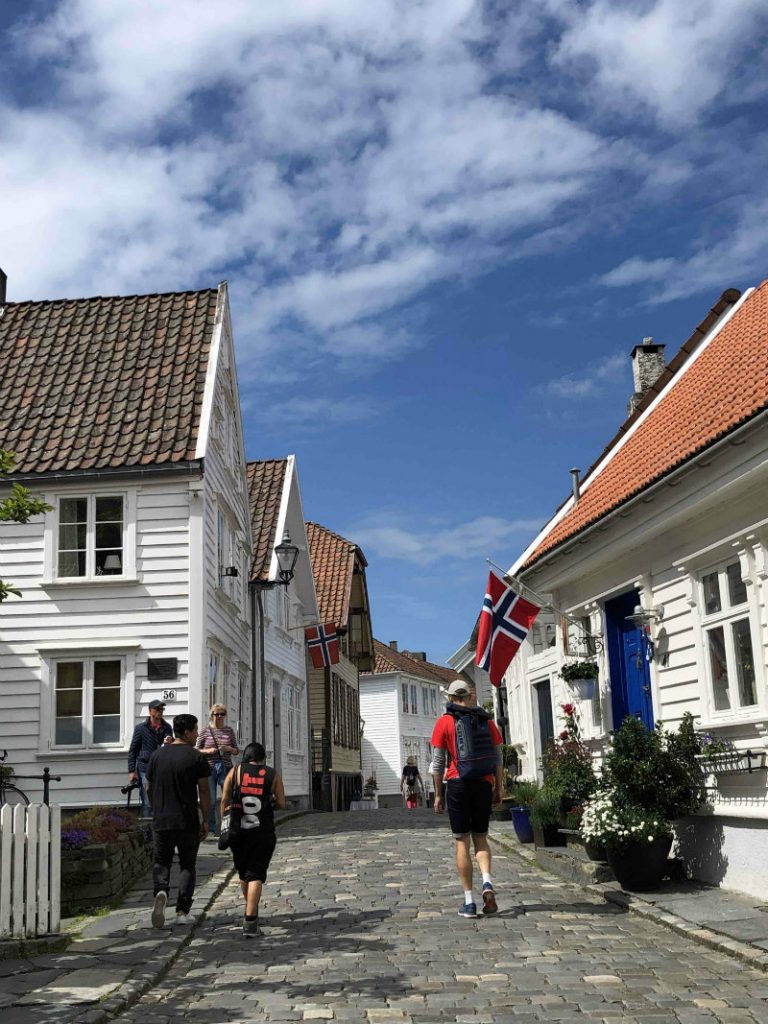
Bear that in mind before peering too closely into windows, or wandering into people's private gardens!
On a summer day, it's hard to beat a stroll along the cobbled lanes between the white houses. The walk is brightened up by vivacious blooms spilling from hanging baskets, and the odd cat meandering around its neighbourhood.
5. Discover Stavanger's Street Art
The white buildings of Stavanger offer a unique canvas for a vivid and diverse street art scene. This urban art landscape, enriched and enlivened by both local and international talents, represents a fusion of tradition and contemporary expression.
Stavanger Travel Resources: Find a Hotel – Car Rental – Book Tours. And when visiting Norway, don't forget travel insurance.
Central to this burgeoning street art movement is Nuart, a festival and year-round collective that have transformed the city into a living gallery. Stavanger's streets and alleys are adorned with works that range from bold, large-scale murals to intricate, discreet pieces.
The spectrum of styles is as diverse as the artists themselves. Graffiti, muralism, stencil art, and activist pieces coexist, each telling its own story. Renowned artists like Pøbel, Banksy, Dotdotdot, Dolk, and Martin Whatson have left their marks here.
6. Walk Stavanger's Colourful Street
It's not just the street art that brightens up downtown Stavanger. Known locally as Fargegaten (which translates as the Street of Colour), ‘Øvre Holmegate' was once a street like any other in the city's central commercial area.
That was until 2005, when a local hairdresser wanted to create a more vibrant environment to attract more people. The street's buildings were painted in vibrant colours , based on a ‘Miami Vice' inspired colour scheme drawn up by Scottish artist Craig Flannagan.
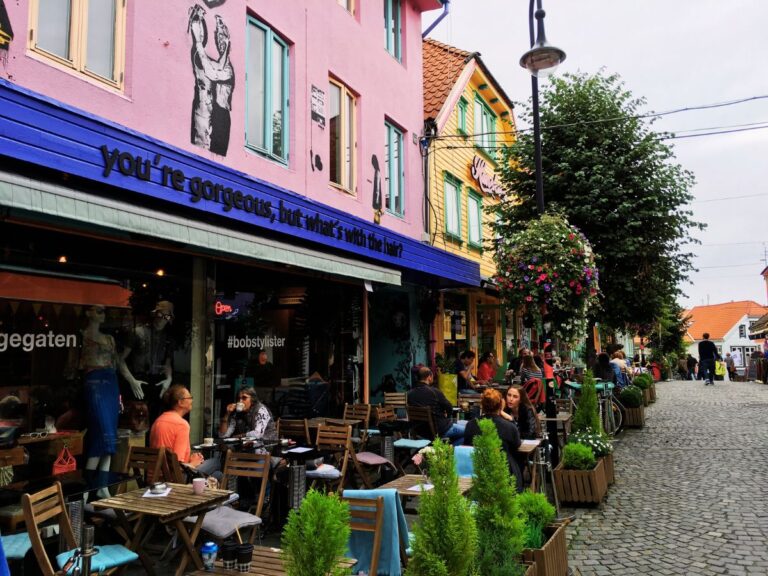
Today, the street is beloved by locals and it’s a tourist draw. It's lines with cafes and bars, which are rarely empty. Visit earlier in the day if you want to grab an outside table.
Museums in Stavanger
Dive into the cultural history of this part of Norway with these fascinating museums. From Norway's oil and gas industry to Viking Age archaeology, there's sure to be something for you.
7. Norwegian Petroleum Museum
Also known as the Oil Museum, the Norwegian Petroleum Museum offers an educational look at Norway's oil and gas story. Surprisingly, the museum places environmental concerns, industry disasters, and the future of the industry at its centre.
8. Museum of Archaeology
The highlight of the Museum of Archaeology is the Viking exhibition featuring large rune stones and information on how the Vikings constructed ships and navigated around the waters of the north.
The rest of the museum is devoted to life in Norway during the Stone Age, including a full-size polar bear skeleton found at Finnøy in the 1970s. The museum is south of the central area close to Stavanger Museum. Bus routes pass close to the museum, but the easiest option is to take a 12-minute walk from the cathedral.
9. Maritime Museum
Popular with day visitors due to its proximity to the cruise ship terminal, Stavanger Maritime Museum displays some of its vast archive of model ships, photographs, artifacts, and documentation from the city’s coastal history.
Free multilingual audio guides add some much needed context to the exhibitions, otherwise your stay will be a brief one. Of most interest to the casual visitor is the building itself, a 19th-century boathouse restored to its former glory.
10. Stavanger Museum
Located just outside the central district but only a 10-minute walk south of Stavanger Cathedral, Stavanger Museum is really two separate museums of cultural history and natural history sharing the same building.
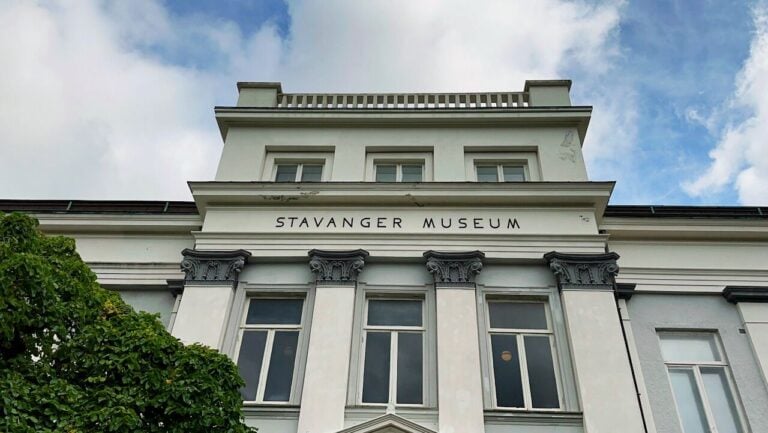
The cultural history half profiles Stavanger’s development from ancient landscape through fishing and farming to today’s modern oil capital.
Artefacts from Asia, America, and Africa show that Stavanger’s history as an international city go back far beyond the discovery of oil. Curious disfigured animals and smiling skeletons fill the natural history museum.
11. Norwegian Children’s Museum
In the same building as Stavanger Museum is a small museum designed to showcase children’s culture and the history of childhood both in Norway and around the world. While the interactive exhibits entertain the kids, adults are kept amused with various old toys that will transport you back to your own childhood.
12. Norwegian Canning Museum
Set in the middle of the charming old town, the Norwegian Canning Museum is an exceptionally well-preserved herring canning factory. Original machinery and English language audio give an insight into what life as a herring worker was like during the pre-oil days.
Thankfully for those with an aversion to the rather pungent aroma, the only thing missing is the herring itself, although a more palatable chocolate version can be bought in the gift shop.
The top floor, where employees used to change, is now home to an activity area for kids and a gallery showcasing the artwork used on herring cans.
Elsewhere in Stavanger
If you have a little more time in Stavanger, consider venturing slightly further afield.
13. Sword monument
Literally translating as “swords in rock,” the Sverd i fjell monument stands beside Møllebukta bay overlooking the Hafrsfjord, 3.4 miles southwest of central Stavanger.
Consisting of three 33-feet tall bronze swords planted in the rocky ground, the monument commemorates the Battle of Hafrsfjord in the year 872, more than 250 years before the city of Stavanger was founded.
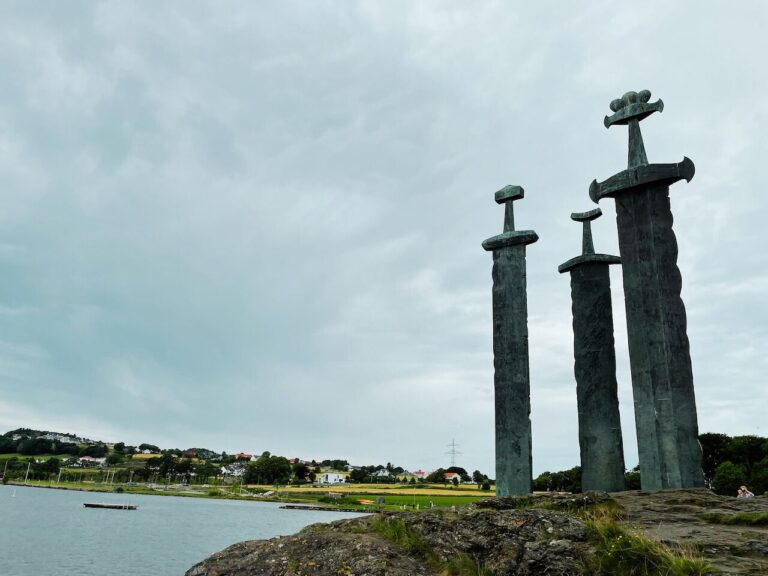
The three unique crowns topping each sword represent the three districts of Norway that were united under the crown of Harald Hårfagre, known as Harald Fairhair and remembered as the first king of Norway.
Møllebukta bay is a popular recreational area, with a small beach, grassy area for picnics and games, and a safe bathing area.
14. Iron Age farm
The museum of archaeology also runs the Iron Age Farm, located at Ullandhaug near the university campus and a 20-minute walk east of the Sverd i fjell monument.
The reconstructed farmstead is based on an archaeological dig in the 1960s that uncovered the foundations of the original buildings dating back to AD 350-550.
During July, actresses demonstrate daily life on the farm, and children can try their hand at spinning thread or even making fire with steel and flint.
15. Flor & Fjære
A collection of tropical gardens on the small private island Sør-Hidle, Flor & Fjære is open for visitors but only as part of a lunch or dinner package.
A former family retreat, the gardens are now run by the Bryn family as a tourist attraction and an experiment to see which international plants and flowers will adapt to a Nordic climate.
The exotic gardens are surrounded by tall trees along the shoreline to help protect the vulnerable plants from the often harsh winds of the Norwegian Sea.
The tour includes the return boat trip from central Stavanger, a tour of the tranquil gardens, and a lunchtime buffet. The quality of the food is outstanding, with fish soup, local halibut and lamb served alongside curried cauliflower and local aged cheese.
A similar early evening tour with a more substantial buffet is also available on selected days at a slightly higher cost. Both tours take a total of 4.5 hours and must be booked online in advance.
16. Sola Strand
Just a few minutes' drive from Stavanger Airport, Sola Strand is one of Norway's best-known beaches.
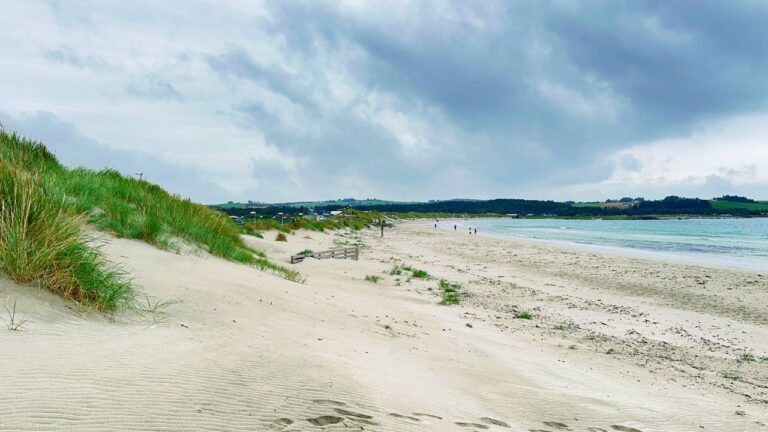
Backed by grassy dunes, this soft, sandy beach with plenty of room to stretch out is the best place to spend a sunny day, although winds can often be frustratingly strong.
On the flip side, this makes the beach a haven for wind- and watersport enthusiasts. Public restrooms and a sheltered area for changing are located at the southern end of the beach, while parking and further facilities are available at the Sola Strand Hotel.
Food, Drink & Events in Stavanger
Hungry? Stavanger has you covered. The region is known by some as the bread-basket of Norway, and that focus on local food is also celebrated with many events and festivals.
17. Dine at Re-naa
One of Norway's most well-known restaurants, the unique Re-naa–open only for a few months at a time–is now just one part of a dining empire. The original Re-naa won the first Michelin star awarded in Norway outside of Oslo, and it has retained that recognition for many years.
18. Sushi with a difference
Fine dining and sushi don't often go together, but they certainly do at Stavanger's Michelin-starred Sabi Omakase. Sit at the counter to enjoy multi-course experience, with each element explained as you watch the skilled sushi chefs at work.
19. Enjoy the local brew
The Stavanger region is home to several microbreweries, but the most renowned beer in the city is produced by Lervig. Enjoy the beers over dinner at the brewery's own restaurant. If you prefer, you can find Lervig beers in almost every city bar.
Live Sport in Stavanger
To get a feel for local life, how about checking out some live sport while in the city?
20. Watch a Stavanger Oilers hockey game
One of Norway's more successful ice hockey teams in recent years, Stavanger Oilers play their home matches at the DNB Arena. Book tickets online in advance.
21. Watch a Viking football game
The local soccer club Viking FK plays their home matches at the smart 16,000-capacity Viking Stadion. Tickets don't usually sell out aside from a handful of big games. They are usually available a few days in advance (book online) for games held every other weekend during the April to November season.
Stavanger Travel Resources: Find a Hotel – Car Rental – Book Tours. And when visiting Norway, don't forget travel insurance.
What are your favourite things to do in Stavanger? Let us know in the comments.

